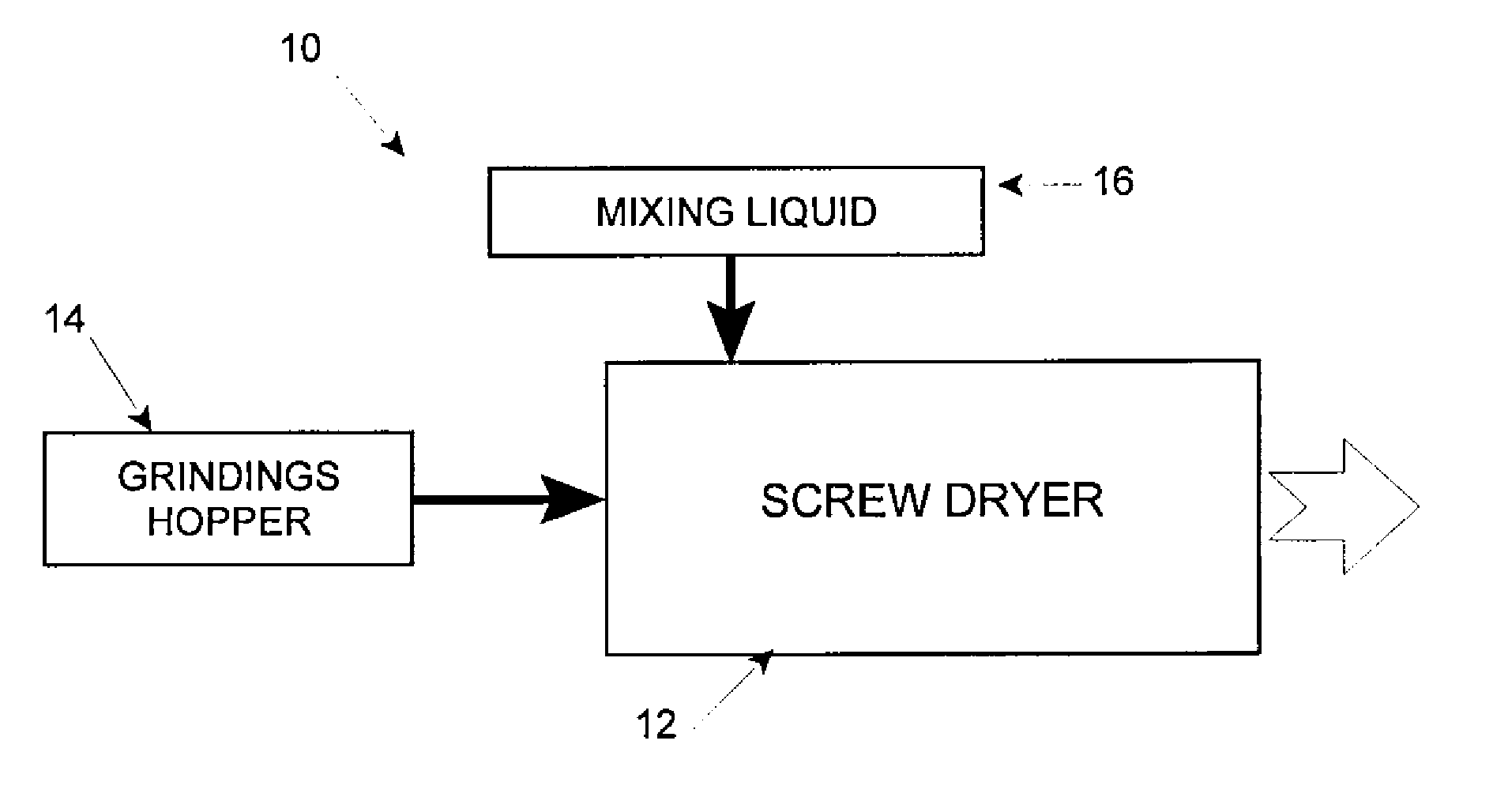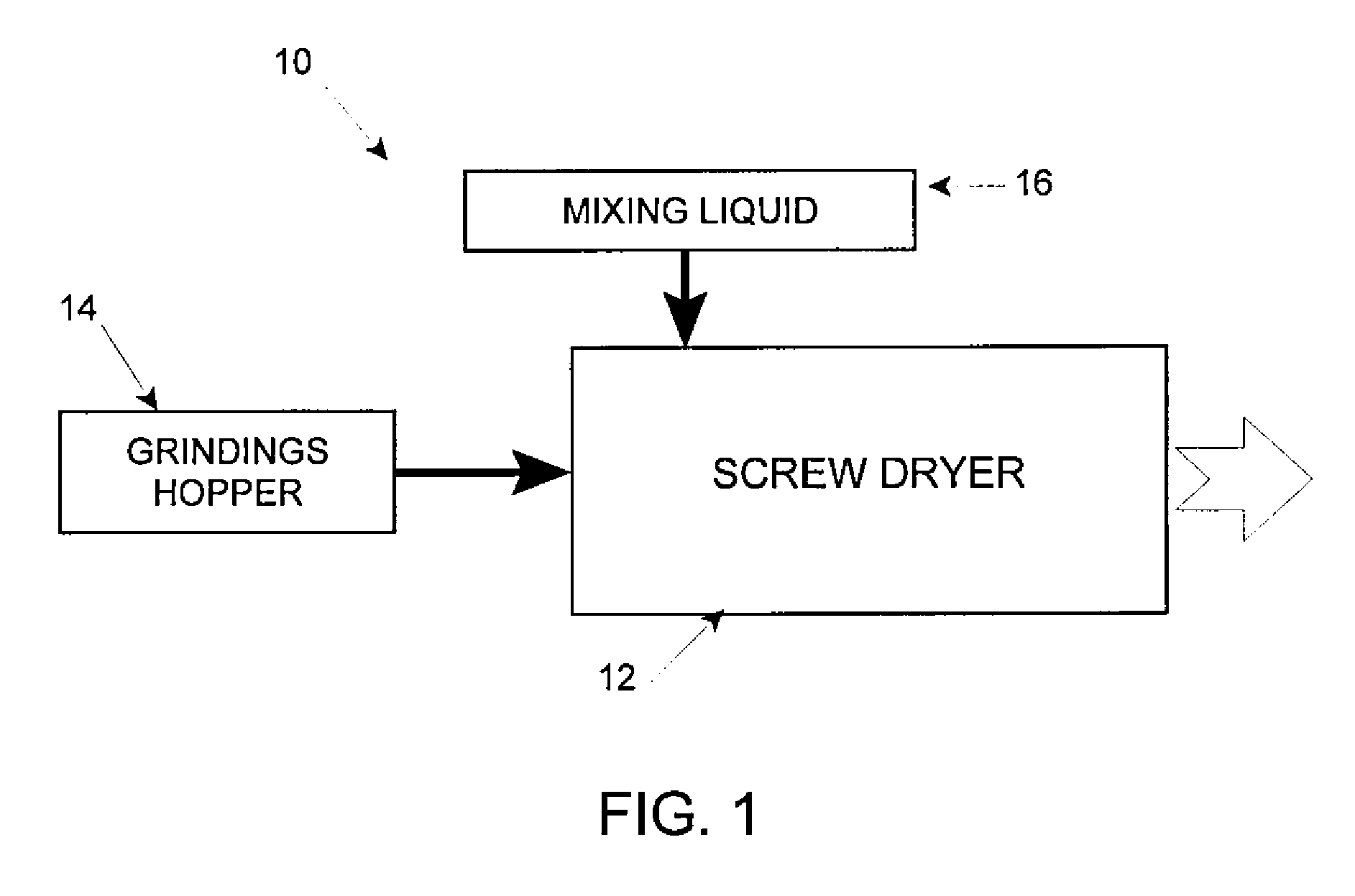Asphalt pavement recycling method and compositions
a technology of asphalt pavement and composition, which is applied in the field of asphalt pavement recycling method and composition, can solve the problems of high ratio recycling, burning of binder, and inability to process old asphalt, etc., and achieves the effect of higher ratio
- Summary
- Abstract
- Description
- Claims
- Application Information
AI Technical Summary
Benefits of technology
Problems solved by technology
Method used
Image
Examples
Embodiment Construction
[0013] The present invention is based on indirect heating rather than direct heating. There is no flame to touch the material and therefore create smoke. According to a preferred embodiment and as depicted in FIG. 1, old asphalt concrete grindings are heated using a screw dryer apparatus 10 which transfers heat through the heated metal screws and / or an outer heated jacket. Screw dryers are manufactured under the names of Thermascrew, Holoflight, Bepex and others. The screw dryer apparatus may have a mixing chamber 12 wherein the mixture is mixed and heated by one or more screw conveyors having hollow flights and / or at least one hollow shaft through which a heat exchange material is passed or which are electrically heated. Previously these heaters were used primarily in the chemical and food business.
[0014] The heat transfer medium can be steam or hot oil, or any other medium wherein heat is transferred through the hot metal rather than by flame or hot gases contacting the grindings...
PUM
| Property | Measurement | Unit |
|---|---|---|
| temperatures | aaaaa | aaaaa |
| temperatures | aaaaa | aaaaa |
| temperatures | aaaaa | aaaaa |
Abstract
Description
Claims
Application Information
 Login to View More
Login to View More - R&D
- Intellectual Property
- Life Sciences
- Materials
- Tech Scout
- Unparalleled Data Quality
- Higher Quality Content
- 60% Fewer Hallucinations
Browse by: Latest US Patents, China's latest patents, Technical Efficacy Thesaurus, Application Domain, Technology Topic, Popular Technical Reports.
© 2025 PatSnap. All rights reserved.Legal|Privacy policy|Modern Slavery Act Transparency Statement|Sitemap|About US| Contact US: help@patsnap.com


